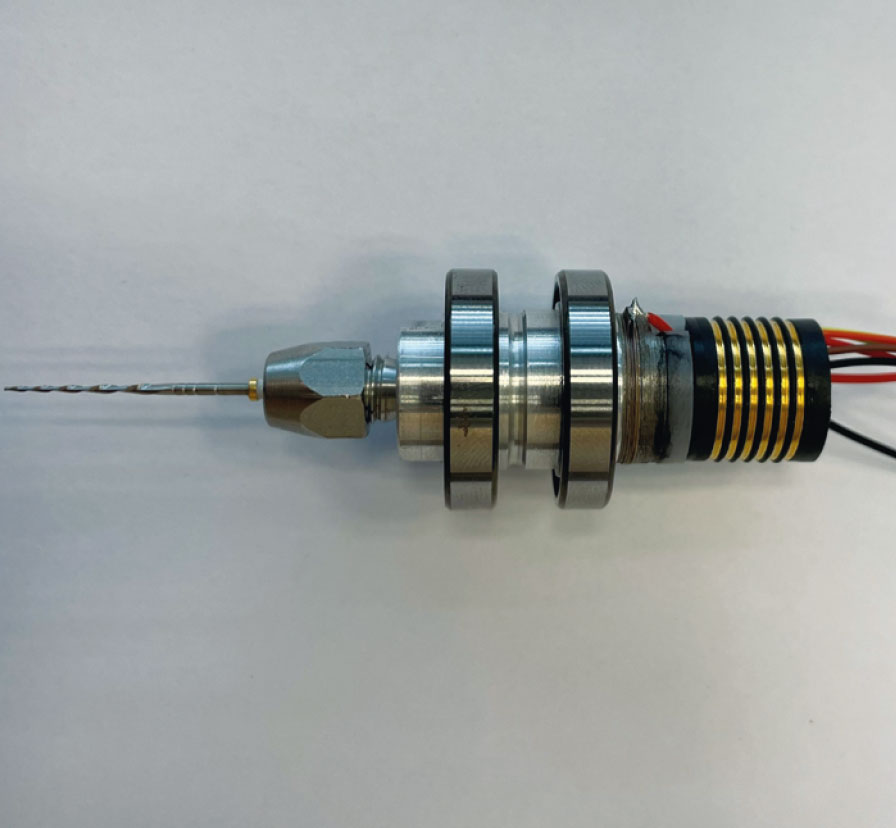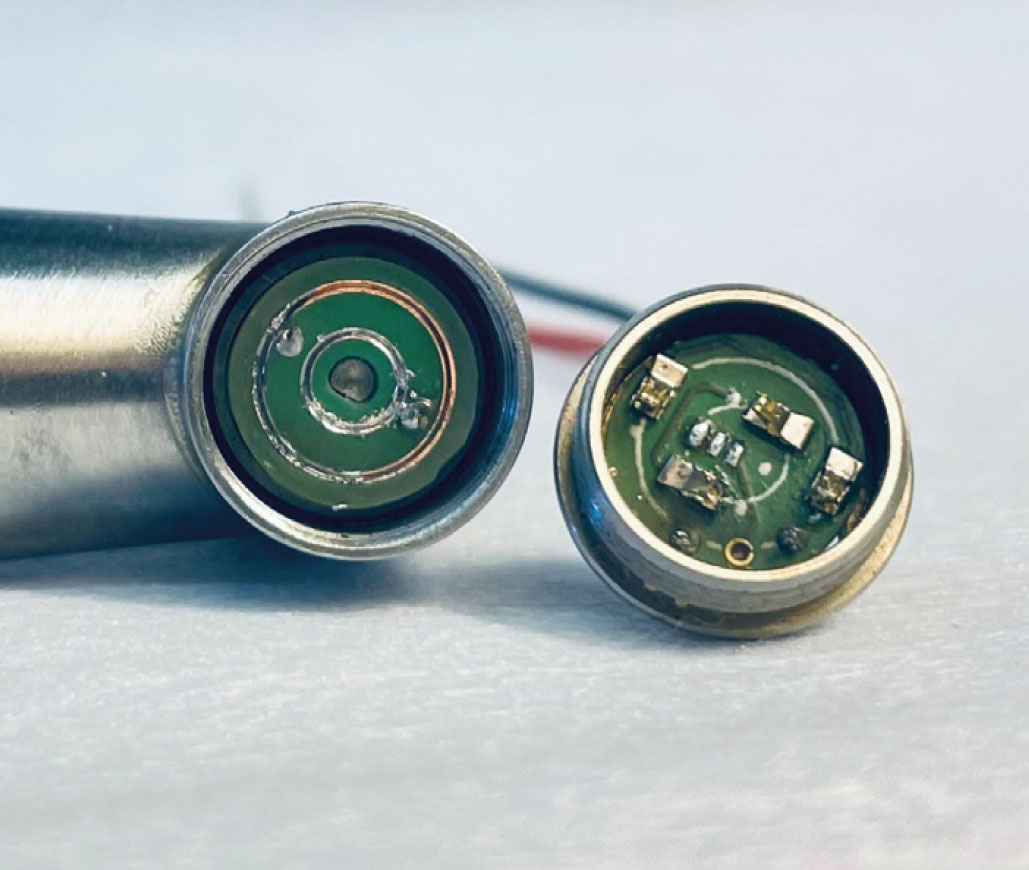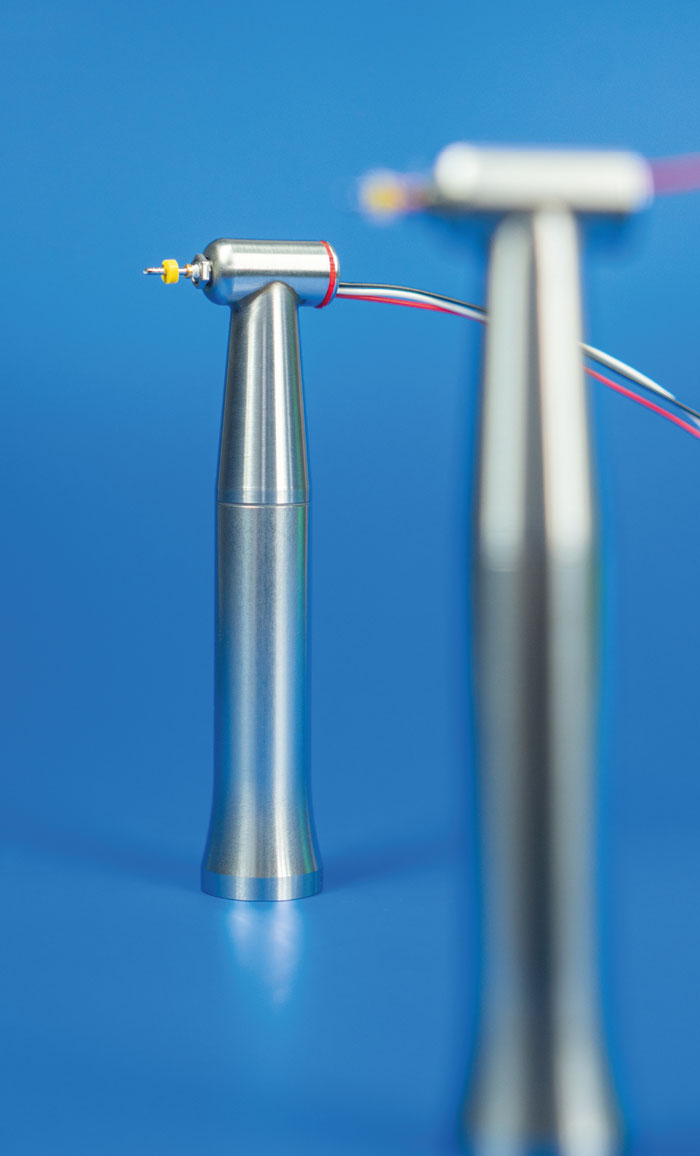
Ultrasound for a faster and safer dental root canal treatment
Current research

Root canal treatment is certainly one of the most unpleasant dental treatments. Within the IPUCLEAN project, Fraunhofer IKTS, together with the Rostock University Medical Center and the companies Komet Dental, Werner Industrielle Elektronik, and Zahntechnik Leipzig, is developing an intelligent ultrasound system for root canal treatment, which reduces the duration of the treatment as well as any complications.
Simultaneous rotation and translation
In contrast to established systems, a translational motion in axial direction is superimposed on the rotational motion of the tooth file, while the root canal is purged at the same time. As a result, the cleaning step, which is currently still necessary to avoid failure of the tooth file, can be omitted. To generate the translational motion, a piezoceramic stack actuator is used, developed at IKTS specifically to satisfy these requirements. The suitability of a conventional lead-based as well as a lead-free piezomaterial is being investigated. With regard to transducer design, a particular challenge lies in the low operating voltage, which necessitates unusually thin individual layers of the actuator stack.
From laboratory prototype to function demonstrator
As a first step, a laboratory prototype was developed and tested. The oscillation behavior was investigated with a laser vibrometer. Based on these results, a function demonstrator was designed and built. In this context, the main challenge was to miniaturize the assembly as needed. This necessitated e.g. the custom development of a miniature slip ring based on a circuit board using tiny spring probe pins to contact the piezoceramic actuator and measure the penetration depth of the tooth file. The function demonstrators are currently being evaluated. In this context, it has already been found in fracture tests that tooth files with small diameters achieve a longer service life. For the future, further development of the control electronics is planned with regard to the optimal oscillation behavior of the tooth file depending on its penetration depth into the root canal. Additionally, further miniaturization is required before the system is marketready.
Transfer to other applications
Within the project, Fraunhofer IKTS has acquired competence for medical applications involving oscillating actuators. In particular, the knowhow for the design of such actuators using lead-free piezo ceramics is groundbreaking and can be transferred to many other applications, such as ultrasonic cleaning and nondestructive testing.
The project is funded by the German Federal Ministry of Education and Research (BMBF) as part of the Twenty20 – Partnership for Innovation program (funding code: 03ZZ1043E) and the smart3 consortium and runs until May 31, 2022.
Supported by




